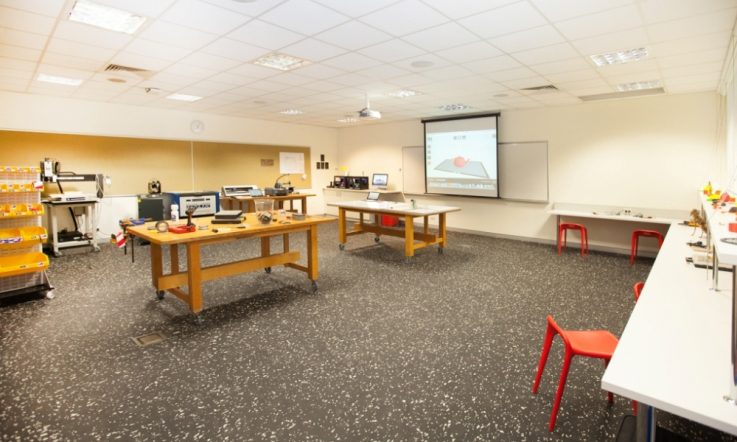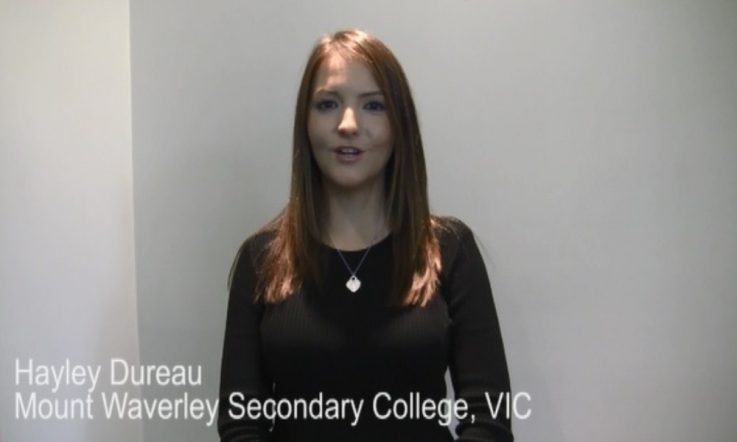School fundraisers don't have to be limited to local community events like sausage sizzles and fetes, these days online crowdfunding offers a connection to a wider audience.
Principal Chris Hopkins has run two successful campaigns on the crowdfunding platform Pozible. One to pay for a library revamp and the other to create and kit out a student makerspace. 'They were two very different experiences – both positive,' he tells Teacher.
Hopkins' first crowdfunding experience in a school context (he's also run a successful online appeal to support a church choir) was in 2012 as a teacher librarian at Hampden Park Public School in the Sydney suburb of Lakemba.
'When I started in the library my predecessor had started to move things around to break up the space, but it was very drab; we had very 1980s furniture, there was no colour, it was really not a pleasant place to be. We wanted to make it a cool, comfortable and, more importantly, flexible space.
'The context was it was a very low socioeconomic area (with 30 per cent student mobility), I was reaching to beyond the community and hoping that there were people out there interested in what I wanted to do.'
The campaign hit its $1500 target within three months. Donations included $500 from a woman living in Sydney's North Shore who had no previous connection to the school. 'She just felt it was important that these kids had access to a library that was well equipped and comfortable.'
The crowdfunding dollars paid for brightly coloured couches, rugs, cushions and reclining chairs, allowing the space to be transformed.
'It was really simple stuff,' Hopkins recalls. 'Two large whiteboards went up so the kids could draw, write and do notes on them, and we bought a nice red square shelf. I actually took my three library monitors to Ikea to pick out the furniture themselves.'
His second Pozible campaign to fund a makerspace at Scarborough Public School in New South Wales launched last year with a more ambitious target of $5000. 'As Principal [here] I've got 74 kids and we're in a high socioeconomic area,' Hopkins says, adding that if he wants to making something new happen he has to find the money himself.
The creation of the makerspace came out of the school's strategic plan, to develop tinkering and project-based learning. Although plenty of parents put their hands in their pockets to help the campaign achieve its goal, they weren't the only ones.
'We had a donation from Germany – I don't know who they were, but they're people that just feel strongly about that particular aspect of teaching. The majority of the money came from our community – parents, some from grandparents, more extended community that wouldn't normally give, and then a few randoms that pushed it up.'
At the same time, Hopkins was successful in winning a local philanthropic grant. The combined funding meant the school was able to purchase a range of equipment, including a 3D printer, Arduino microcomputers and crafting items such as tubes, balsa wood, wheels, pegs and levers.
An old computer lab that became surplus to requirements after the computers were moved into classrooms now houses the new makerspace, which opened at the start of this year. 'It's still a work in progress as to how we use it effectively – there are things that have worked, things that haven't and we'll continue to evaluate that and work out how we can make it work better.'
Hopkins says the positive crowdfunding experience hasn't just been about the money. The social media and online presence has led to other opportunities and donations. As a result of the makerspace campaign he's been contacted by the Ian Potter Foundation, received funding from the 3D printer company the school bought from, and been contacted by the Powerhouse Museum about its Maker Faire. 'This has actually really raised the profile of what we're doing at the school.'
His advice for others wanting to go down the crowdfunding route is to set a realistic target (Pozible's 'all-or-nothing' option means if you don't hit your target you don't get anything), put forward a persuasive, plausible argument, and make sure your donors feel valued.
‘Once the money's in it's not over ... you've gone into a relationship with somebody – they're giving you money and in many cases … they do want that thank you card or that keyring or whatever it is that you've offered [in return for their support] because that means something to them.
'Just cutting it there and saying "well, we're done now, we've got the money and we don't need to worry about it" is not going to give you a great chance of raising money if you decide to do it again. That would be my biggest advice – make sure the people that have donated feel valued.'



